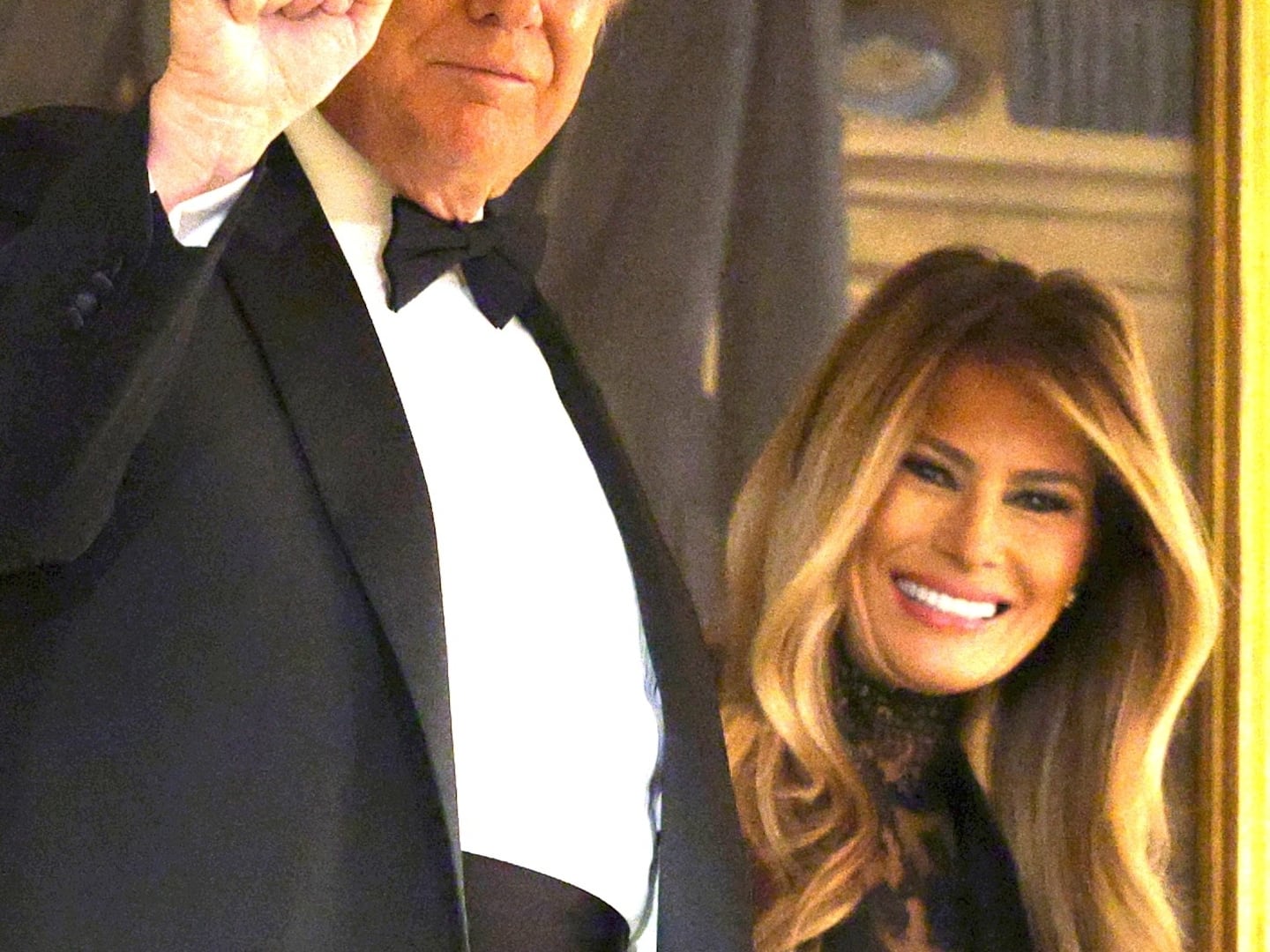He is cinema’s Doc Brown—a mélange of filmmaker and quirky inventor whose digital canvases resemble abstract works of art sprung to life. Michel Gondry began his career directing avant-garde music videos for the likes of Björk, Daft Punk, and Radiohead, before helming innovative commercials (he invented the “bullet time” technique employed in The Matrix), and eventually, feature films.
The Frenchman’s 2004 sophomore feature, Eternal Sunshine of the Spotless Mind, a sci-fi romance centered on ex-lovers Joel and Clementine (Jim Carrey, Kate Winslet) who decide to erase one another from their memories, earned Gondry an Oscar for Best Original Screenplay—shared with Charlie Kaufman and Pierre Bismuth—and is regarded as a cult classic. After helming the documentary Dave Chappelle’s Block Party and the awe-inspiring The Science of Sleep, he crossed over to studio films, including Be Kind Rewind and The Green Hornet, with mixed results.
But the master manipulator of mise-en-scène is back to what he does best in his fifth feature. “With Mood Indigo, I really let myself be as me as I could be,” Gondry tells The Daily Beast.
Based on Boris Vian’s novel Froth on the Daydream, the French language film tells the surrealist tale Colin (Romain Duris) and Chloe (Audrey Tautou), a young couple who happily fall in love and marry. But as time goes by, Chloe falls ill and begins to wither away. Like Gondry’s best films, it incorporates a variety of visual flourishes, including a cloud car that hovers above the earth, doorbells that hop around ringing until they’re stomped, and a pianocktail—a piano that registers your song, and then crafts the perfect cocktail to accompany it.
In person, Gondry is more Joel than Doc Brown—a fragile, soft-spoken man with a mop of curly brown hair. And the Brooklyn resident has crossed the bridge over to Manhattan for a long talk on his career.
Some people probably forget that you directed the documentary Dave Chappelle’s Block Party, since it’s such an odd mix of director and subject, and now he’s making a comeback nine years later.
I didn’t see his Radio City shows, but I’ve seen him do stand-up many, many times. And I saw him three or four months ago. I love him. It’s funny, because between us, we have such a hard time understanding each other’s accents. I really like him and hope we’ll work again together soon. I always suspect that he had asked Spike Jonze to direct [Block Party] before me, but Spike was not available and I was the second choice. But maybe that’s me being paranoid!
And this was back in 2005. Your documentary featured an up-and-coming rapper by the name of Kanye West who’s absolutely massive now.
He was just starting to be huge. What I noticed for Kanye West was, as big of a megalomaniac as he may seem, I came to see him do this tiny show in a little shop, and he gave it 100 percent. I thought, “He has what it takes to be a big star.” If, in the worst conditions, you give it all you’ve got, you’re going to be great. The experience doing a video with him was very weird. Before that, he was sort of kissing my feet like I was God to him, and then he asked me to do a video for “Heard ‘Em Say,” and then he rejected the video, and then he liked it again. It’s set at night in Macy’s in New York, he’s homeless, and he comes to the store with his children and mean security guard is Adam Levine, but they enjoy all the empty floors. It’s a bit like Chaplin. But he rejected the video and reshot a video of the same song with Bill Plimpton, which is the biggest humiliation for a video director, and then he liked mine again.Did he tell you why he rejected it?Yeah, kind of. He wanted it to be cuter because it was Christmastime, and he wanted it to be sweet. Also, some members of his entourage thought it was weird, saying, “It’s weird that you’re in the same bed as your kid,” but if you’re a Dad and you have a kid, sometimes you sleep in the same bed. He was weirded out by that, for some reason.
It’s also the 10th anniversary of Eternal Sunshine of the Spotless Mind. I was talking to Mark Ruffalo recently, and he told me you called him while you were filming in Montauk with Jim Carrey and Kate Winslet saying that everyone was being very mean to you, and that you wished he was there.
Oh yeah! He’s so nice. I remember when I met with him, he brought this idea that his character would be a fan of The Clash, and look a bit like Joe Strummer. I thought it was such an unexpected take on the role that I immediately gave it to him. What was funny is I had to bring Jim Carrey so far down, to the point where he couldn’t improvise or joke too much, but then there are scenes where he’s sleeping in the bed and he had to be laying there very still because he’s in the frame, and he’d see Mark Ruffalo and Kirsten Dunst be crazy and improvising and going off-script, and he got so frustrated. He said, “Why are they improvising? You told me the opposite!” And I had to explain to him that it was different for his character. Sometimes, I had to talk to Kate Winslet in a different room to tell her, “Go as big as you want! This is a comedy!” And to Jim, I’d say, “This is a drama, not a comedy.” Jim was very frustrated while we were shooting it, but after that, we became closer and friendlier, and now, he remembers it as a great experience.
Ruffalo also told me that Tom Wilkinson was very frustrated during shooting as well, and at one point, he turned to him and said, “I don’t know what the hell we’re doing!”
It’s funny because, as much as Jim Carrey was demanding and always on his nerves, with Tom Wilkinson, I’d give him a direction and he’d just look me right in the eye and say, “Why?” I was petrified, and it left me wondering, “Do I give him this direction?” I was reconsidering everything at the roots of my profession, and then he’d also do three takes and wouldn’t do any more. But he was great in all three takes.
How did you coax such a great performance out of Winslet? You said you had to take her to separate rooms and coach her, and she’s gone on record saying this is her favorite performance of hers ever. And Clementine, the neurotic hipster, is very different from other characters she’s played.
It is. And I think she’s grateful that she got the role because she’d started to be stuck in English period pieces, and this role gave her the opportunity to be very American and hip. And she had the blue hair ten years before Blue is the Warmest Color! I had to get that in. But she got the part because I’d interviewed all the most famous actresses of the time, because Charlie Kaufman’s script was very good, and she was the only one to give any negative comments on it. Basically, she was the only one not licking my ass. She said that it was a little bit repetitive in some places, and we shouldn’t shy away from being more sentimental. She also said she was going to be just as big as Jim Carrey in the movie, and you can’t have two Jim Carrey’s in one movie, so Jim would have to tone his performance down—which is exactly what she did.
Another actress was approached for the role because the studio wanted her, but then I saw Kate Winslet and offered her the part, and then this other actress got the Oscar, so the studio tried to make me switch the actresses. I said, “No! If you want to switch, you can’t force me or else I will leave.” I can’t say who the other actress is, because that would be rude. And looking back, it would have been such a mistake. Kate was exactly the right person for the role.
How did you arrive at Jim Carrey for the lead role of Joel? He was really playing against type as this sullen loner.
We had approached Nicolas Cage a long time ago, but every independent director who wanted to make a commercial movie asked Nicolas Cage to be in their movie after Leaving Las Vegas, except he would only do one out of ten of these projects. We had to find an actor who could help us finance the film, because that’s the name of the game, and of all the actors we saw, Jim was the one we could identify with. He has this very normal quality—not super handsome. And it’s hard to be funny. It’s far easier to take someone really funny and bring them down than do the opposite. We all felt that Jim was an unexpected—but good—choice.
Do you have any favorite memories from the making of Eternal Sunshine?
Well, my girlfriend left me when I was editing it and we had a great relationship, so I can’t watch it anymore. It makes me too sad. It’s funny though because some of the action we shot when Jim collects all her belongings and puts them in a garbage bag, I thought, “Oh, that’s such a stereotype,” but when my girlfriend left me I lived it! I had to put all my stuff in a cardboard box and send it back to Los Angeles, and I thought, “OK, now I understand what the movie was saying.”
Both Eternal Sunshine and Mood Indigo concern a relationship unraveling. Why do you find yourself so fascinated by heartbreak?
Well, my heart’s been broken many times. It’s in pieces now, and I’m trying to stitch it back together so someone can go break it again. Sorry, I’m sounding very negative! But I know the sadness, a little bit.
Is it cathartic for you to put it onscreen?
No. It just makes it worse, in a way. But at least I make a living from it. Talking about something you know makes it more convincing, maybe. With Mood Indigo, I had a girlfriend who got really sick in America and I had to pay for the hospital bills. She had leukemia and she’s fine now, so I can talk about it. It was while I was doing Human Nature [2001], so a long time ago. I know what it feels like to be next to a sick person because I lived that. And, when you’re dealing with someone who’s going through the worst time in his or her life, she was not nice to me all the time. There’s an element of that in the film, where Audrey’s character is having a really rough time and lashes out at Romain’s character. But, when you go through something like that with someone, it’s very hard to maintain the relationship after it’s over because you get associated with her worst memories.
How did you manage to get through that time? Did you just dive into your work?
Fortunately, I could contribute money to saving her by doing work that wasn’t so horrible to do. I’d directed four commercials in a row, so I had a big amount of money and we could pay for all the best treatment. It’s completely unfair in America. You can’t get the best doctors with just insurance. The system is sort of rotten because of insurance, and the lack of social security, but some of the doctors are really good. She was at Cedars-Sinai in New York, and the prognosis was pretty bad, but they saved her. She’s doing great now—has a baby, and a boyfriend. We email every month and everything is good. She lost all her hair, but now it’s back. I remember the doctor said the nicest thing to her when things were looking grim and she was in the middle of chemo, and wouldn’t believe she would survive. He said, “Don’t worry. One day, you will have beautiful gray hair.”
How did you develop this knack for inventing, and surrealism? I read that your grandfather was Constant Martin, who invented the clavioline.
It’s very hard to know what goes through the genes! I was in a creative environment since I was born, so it probably helped me. I’ve been inventing things since I was a kid—with cardboard, paper, or wood. I would meet my cousin, who was living in the South of France, and we’d build cities (he later became an architect). We made this bridge and had this car that would move by the air from a balloon, and then this weight would fall on it and everything would explode. We loved making things explode. I wanted to be an inventor or a painter, but I don’t think I was capable of doing either of those. When I found out I could do both of those things in a medium way with the camera, I decided to pursue that. I have some ideas that could be used for inventions, but I’d need an engineer to translate them.
The cloud car in Mood Indigo is amazing. How did you design that?
The cloud, to me, looked very dreamy in the book, and I wanted to make it in a contour way—so have it be metallic and real, like you would really ride it. I made it physical, and the actors were really hanging from a crane 100 feet above the ground.
What do you find are some of the big differences between directing a big studio project in the U.S. and directing a film in France?
In America, the director is more respected on the set by the crew—they have better manners. But when you go into editing, you lose power. In France, it’s the other way around—you’re more bullied by the crew while shooting, but in the editing room, you get your power back. With actors, when you’re shooting in America, you feel like the actors have a lot of power—especially the ones that are bankable. Actors in France really put themselves in the hands of the director, and they are less demanding. Actors in America, like for instance Jim Carrey, ask for many, many takes. Even if you don’t have time to do them, they ask for more takes. But when I did my first film in France, The Science of Sleep, I was surprised that the actors didn’t ask for more takes. I went up to Charlotte Gainsbourg and said, “If you feel like doing something different, ask me. I’m used to the actors asking me for more takes.” So later on she did, and it was great.
Was The Green Hornet an example of a Hollywood film where you lost your power in the editing room?
Yeah. In America, people felt it was lacking something more personal. We had an earlier version that more darker with more absurdity in it, which was probably better, but when you have a movie that costs $100 million, you can’t be the only one responsible for its success and have to share the decision-making. It’s true that with some of the decisions, I didn’t have much choice. It wasn’t just the studio, but also the writer-actor-producer, which were all Seth Rogen. It was a bit more his movie than my movie, in a way. But I have no regrets.
What did you learn from The Green Hornet experience?
Well, I learned that I should be more involved in the story. The movie was successful—it made $200 million worldwide. I asked my agent how successful it was, and he said: “You have movies that are A-successes like Spider-Man, B-successes like The Green Hornet, and C-successes like The Shadow, with Alec Baldwin. Our movie was in-between… but some kids really liked it.
What do you have coming up next?I’m going to shoot in two weeks, actually, in Versailles, where I grew up. Actually, we’re going to shoot next to the house where I used to live, which is the house of my grandparents. It’s a movie with two teenagers—14-year-olds—who build a car to go on a trip. Because they’re not allowed to drive the car since they’re too young, they disguise the car as a house so when they’re stopped by the cops, it just looks like a house on the street. We did street casting to find the kids, and Audrey Tautou will play the mother of the main character. She looks a little bit like my mother as a kid, and the main boy is based on me. The road trip portion is based on a dream I had. Movies are a good opportunity to achieve a dream I didn’t in real-life, so I’m using this film to achieve my dream.
Are you done with Hollywood, or do you see yourself coming back to do a studio film?
I’m not sure they want me, to be honest. If they ask me to do something that I like, then I will with great pleasure. But there aren’t many scripts that I like. In the ‘70s, Coppola could do these big studio movies because they didn’t have the recipe down, but now, the movie studios have the perfect recipe to make millions on each project—you reboot, do sequel, sequel, another sequel, and reboot again. And then there are all the CGI movies for kids. My dream is to find a story like Groundhog Day or Back to the Future—a story that’s very comedic, but very intelligent and sensitive.






